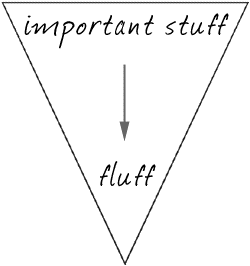
Beginning with this post we will periodically be revisiting essential AML compliance topics. Refreshing the fundamentals and AML priorities helps us stay focused and able to absorb new ideas and trends.
Writing useful narratives for Suspicious Activity Reports (SARs) can often be a struggle. When there are many transactions, involving multiple parties, over a long time period, putting together a clear explanation of the facts can be challenging. Part of the challenge is providing clarity to the mountain of information gathered during the investigation; another is recognizing that the narrative is being written for an outside audience: analysts and investigators at law enforcement agencies.
So how do we take all the pieces of the transaction puzzle and create a clear picture for the reader? We go back to the basics; we use the 5 W’s and the H – who, what, when, where, why, and how. Think back to when you learned to write a simple composition conveying the facts of a story. You started with an introduction, then the body of the story, and ended with a conclusion. This tried and true formula is exactly how to write a useful SAR narrative, essential for AML success.
In preparing the introduction to the narrative, try to answer this question, “why should the reader care about this and find value?”. Centering your composition around this will help you state clearly what the reader should look for in the body of the story. The reader will care about the story if you tell them what type of activity you are writing about and summarize the “red flags” for suspicious activity you have observed. It is also useful to state the date(s) of any previous SARs filed about this activity (if any) and any internal investigation designations to which law enforcement may refer, if they contact your institution.
When developing the body of the narrative, use the news writing technique of the inverted pyramid. Put the important information at the beginning and less important facts toward the end. The website DailyWritingTips illustrated the concept this way:
 Inverted Pyramid, DailyWritingTips
Inverted Pyramid, DailyWritingTipsIn the body you should clearly lay out the who, what, when, where, why, and how. In this section, try to keep in mind the question, “how do I get straight to the point?”. When telling the details of the story be specific; if you are discussing a withdrawal, include the form it took, e.g. cash, money order, cashier’s check, etc. Summarize the flow of funds in the transactions; where the money came from and where it went. When referring to dates, tie them to individual transactions rather than giving a range.
Be sure to cover all of the parties in the transactions and the relationships among them; include detailed information about all of the financial institutions and account parties that have been identified in your investigation – the who. Include complete information about the accounts and branches involved, along with the source of all funds, and dates of all transaction. Also take mind to lay out the information with specific amounts and related dates – the what, the when, and the where. Discuss the sequence of the activity and the channels used to move funds – the how. Finally, speak to any relationships you have identified among the parties to the transactions and what you think is going on or why the activity is suspicious – the why.
In drafting the conclusion, reiterate why you have concluded that the activity is suspicious and tell the reader what other actions your institution is taking (e.g. are you closing the account? or increasing the level of monitoring on the account?).
A useful SAR narrative should allow a reader who has not been immersed in the investigation and the facts it has revealed to understand the story and grasp its essence. (On a side note, you might find a new appreciation for the hard work that your 6th grade English teacher put in to helping you become a better writer.) Either way, it will serve as an effective summary of all of the work that you have done investigating the activity to date. Most importantly, it may lead to a successful prosecution of financial crimes.

